May 4, 2020 - 2:27pm

HELP - Failed first time sourdough
Hi everyone,
A newbie baker here! This past weekend I embarked on baking my first sourdough. The result? Not so great. The taste itself was fantastic but the loaf itself didn't rise but I cannot figure out what went wrong. I have attached some photos and here is a link to the recipe I used: https://breadtopia.com/kamut-sourdough-bread/ (40% kamut whole grain).
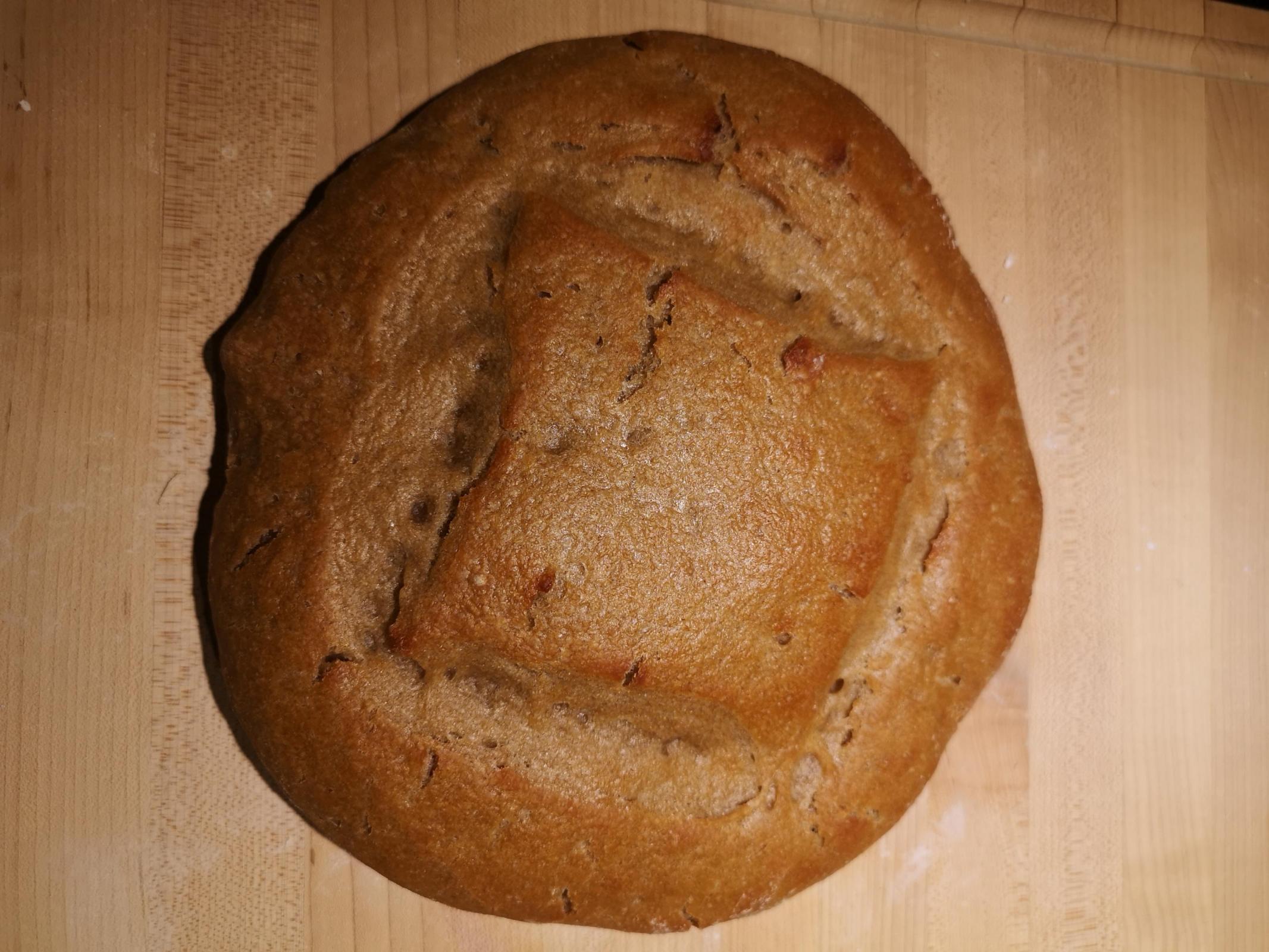
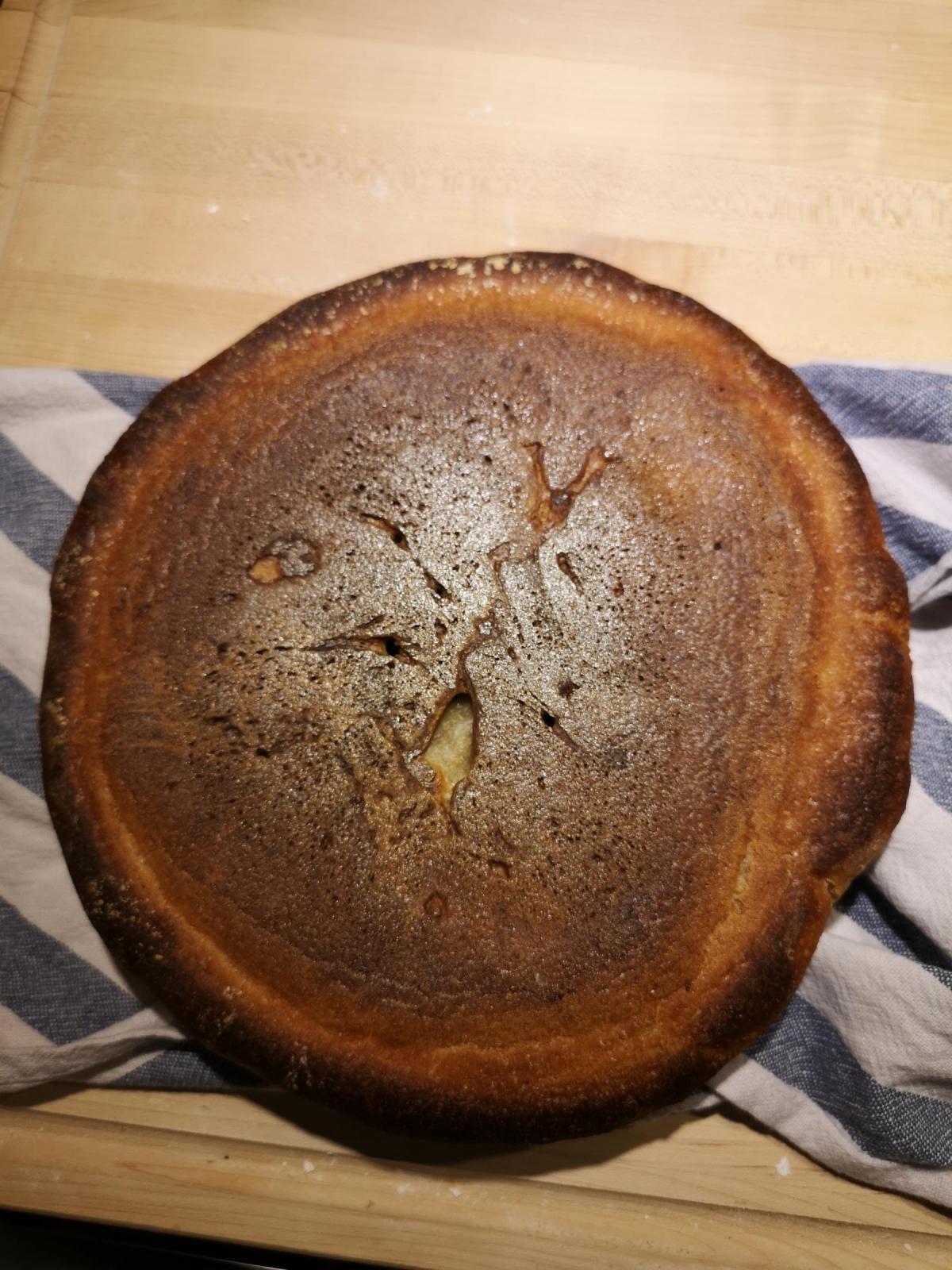
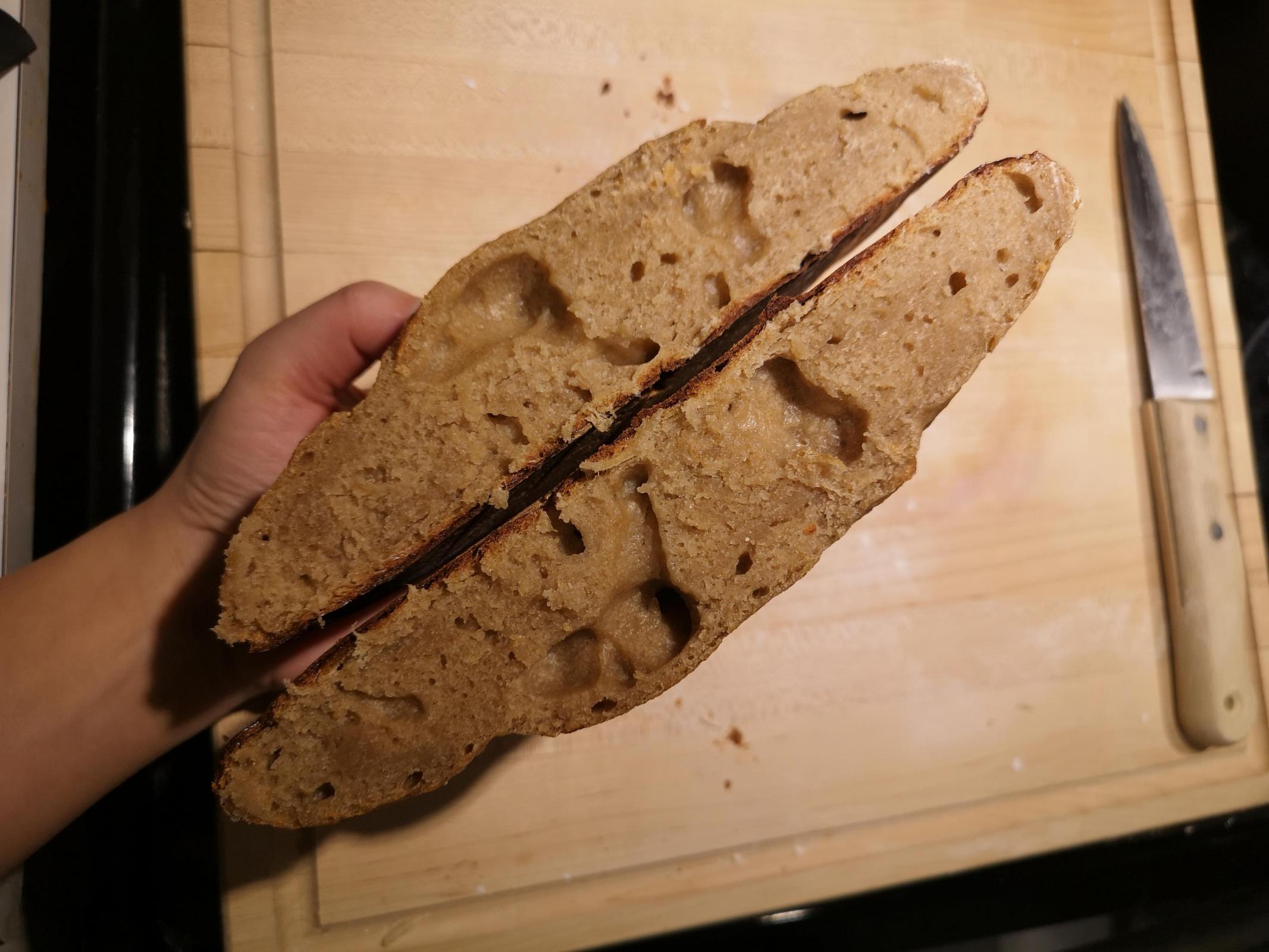
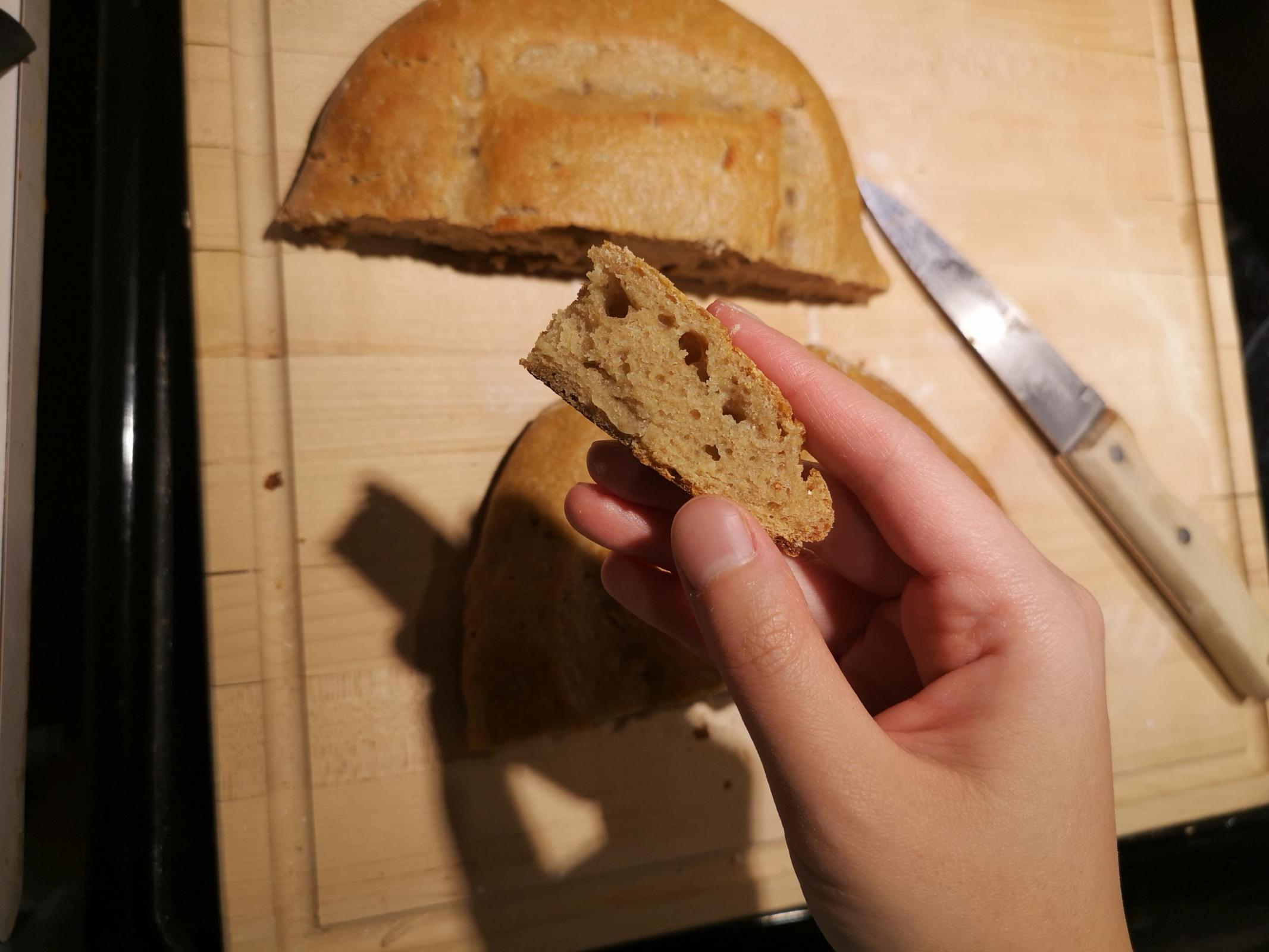
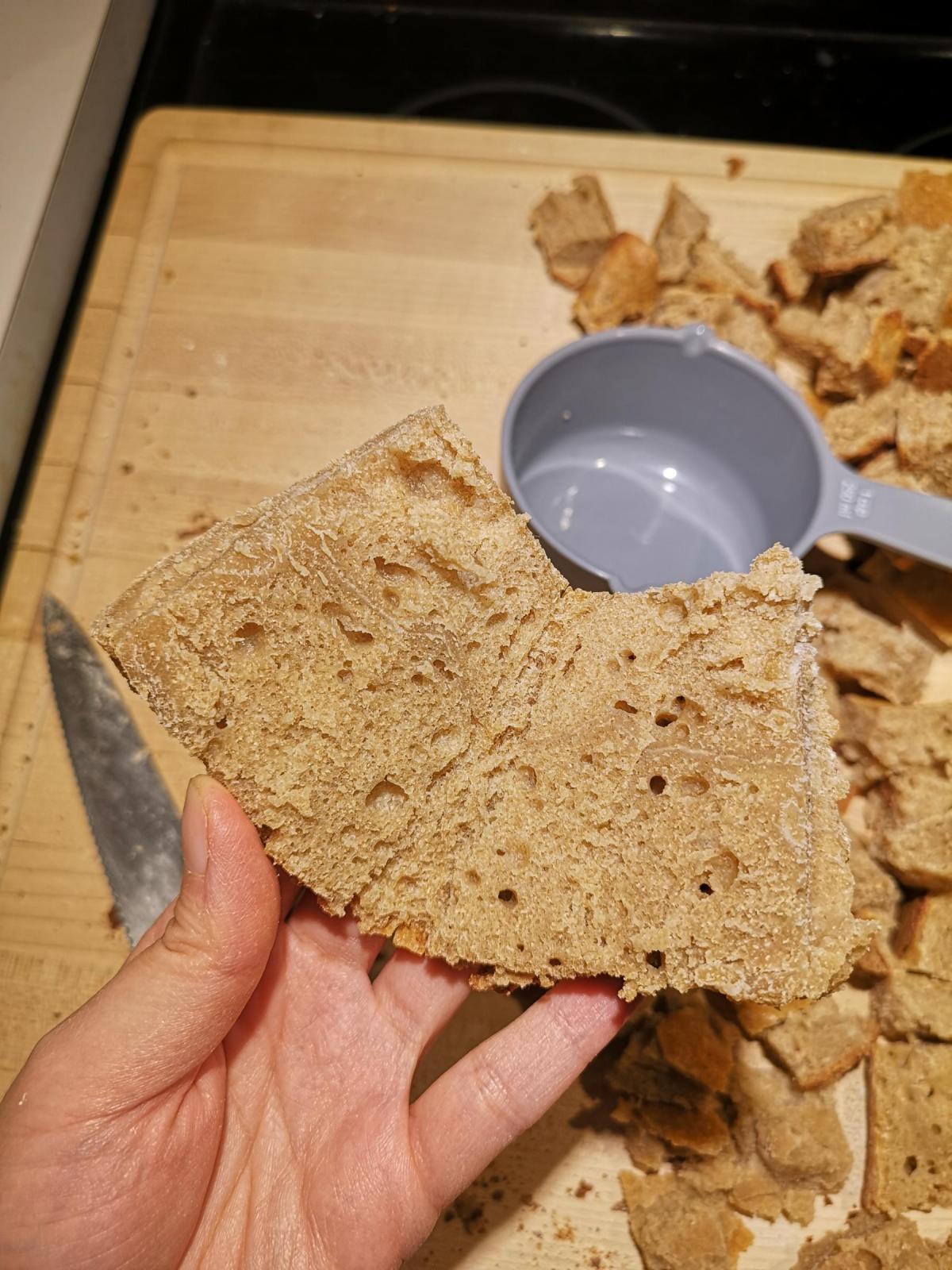
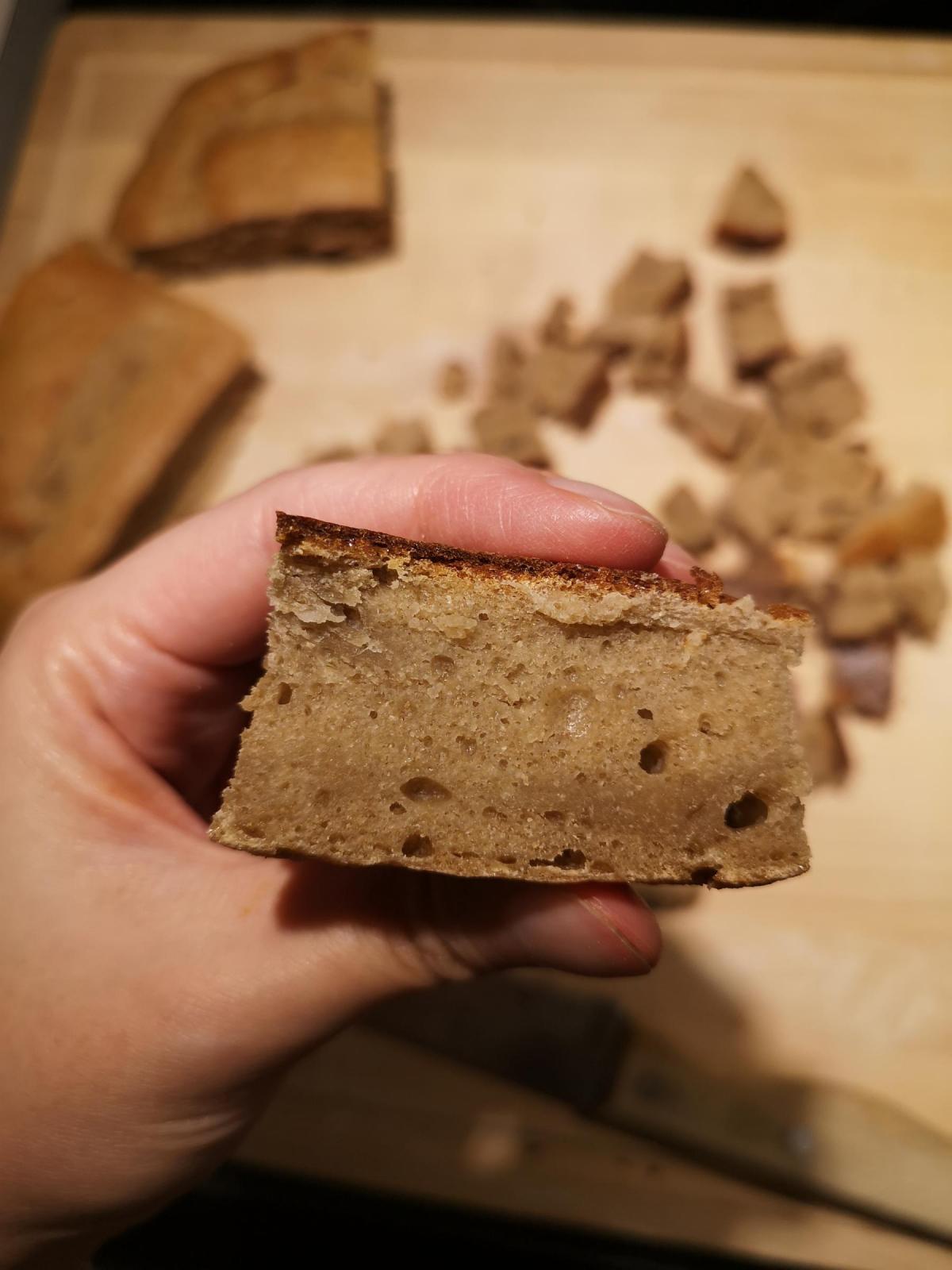
As you can see, it is very dense. I should also note, it was tough to even get it shaped (edit: nearly impossible) to get it into the final proofing stage (I did 10 hrs overnight in the fridge)...
Any help would be greatly appreciated!
Thank you


Hi Newbie! I've baked a lot of loaves that looked just like this. It turns out I was overproofing the dough before baking which caused the gluten structure to fall apart (hence impossible to shape). I'd suggest backing off on your proofing time and baking while the dough still has strength left in it. On the bright side, my husband says that overproofed loaves like this one taste the best. You might find that to be true too!
Thank you so much for your insights! I'm definitely going to try reducing the proofing time this weekend see how it goes. I was also contemplating reducing the amount of kamut flour I am using from 40% to 20%. And your husband was definitely right - this loaf tasted incredible! :-)
After overproofing many loaves (many, many loaves, lol), I've become quite proficient at diagnosing it. Classic signs in the final loaf:
-Gummy, dense crumb
-Great flavor
-A very gummy, laminated layer at the bottom of the loaf where air bubbles formed but collapsed on themselves from the weight of the dough as the acidity of the dough weakened gluten structure (that dark portion in your last picture).
-Random large holes within the dense crumb
-Flat, spread out loaf that doesn't hold it's shape during the bake.
-Pale crust color from most of the sugars being consumed, so little left to caramelize. This is harder to observe in whole grain flours.
I hope my "failures" can help you get to the results you're looking for. Good luck! :)
looks okay bit over done but I bet the taste was awesome agree with former comment less proof and might I suggest 3minutes less baking
Absolutely! The taste was on par with some of the best loaves I've had. I absolutely will try less proofing time and see how it goes the second time around - thank you for your help! Curious, why do you suggest 3 minutes less baking? I did 30 minutes in a dutch oven (lid on) at 500 degrees then 450 degrees for 10 minutes with the lid off.
I'm going to respectfully disagree and say that it looks under proofed. It is dense and with larger air holes near the top, typical signs of under proofing. Is your starter new? The starter should be very active before trying to really bake with it. If you feed it 1:1:1 starter:flour:water and ferment at around 78-80*f does it double in volume in around 4-6 hours? If not you might want to do more feedings to get it more active.
How long was your bulk fermentation and at what temperature did you do bulk? Remember time and temperature are important variables in order to achieve good fermentation. If a lower temperature then it will take longer, higher temperature will ferment more quickly.
Benny
My sourdough starter was around a week old and passed the float test two days in a row before I started baking with it. It does double in volume in that time frame as well, with ease.
I did a bulk ferment for 8 hours from the time I added the leaven and then 10 hours in the fridge overnight. I didn't take room temperature much into consideration at the time (such a newbie move, I know) but it was around 70 F most likely in the room at that time and I actually did put it in the oven - maybe that was a big mistake?
How much time would you recommend me to bulk ferment for before putting it in the fridge? I most likely will do it on the counter this time which would be consistent with 70 F.
Thank you!
The usual advice is to watch the dough and not the time. Do look for about a 50% increase in dough volume. Look for signs of fermentation such as bubbles the dough at the sides of the bowl and some bubbles on top of the dough. The dough should have a nice jiggle to it when you shake the bowl. It should feel lively and not just a firm lifeless mass. I'm not sure if that makes sense. Where the dough meets the edge of the bowl, the dough should be convex and not just flat at the edge of the bowl.